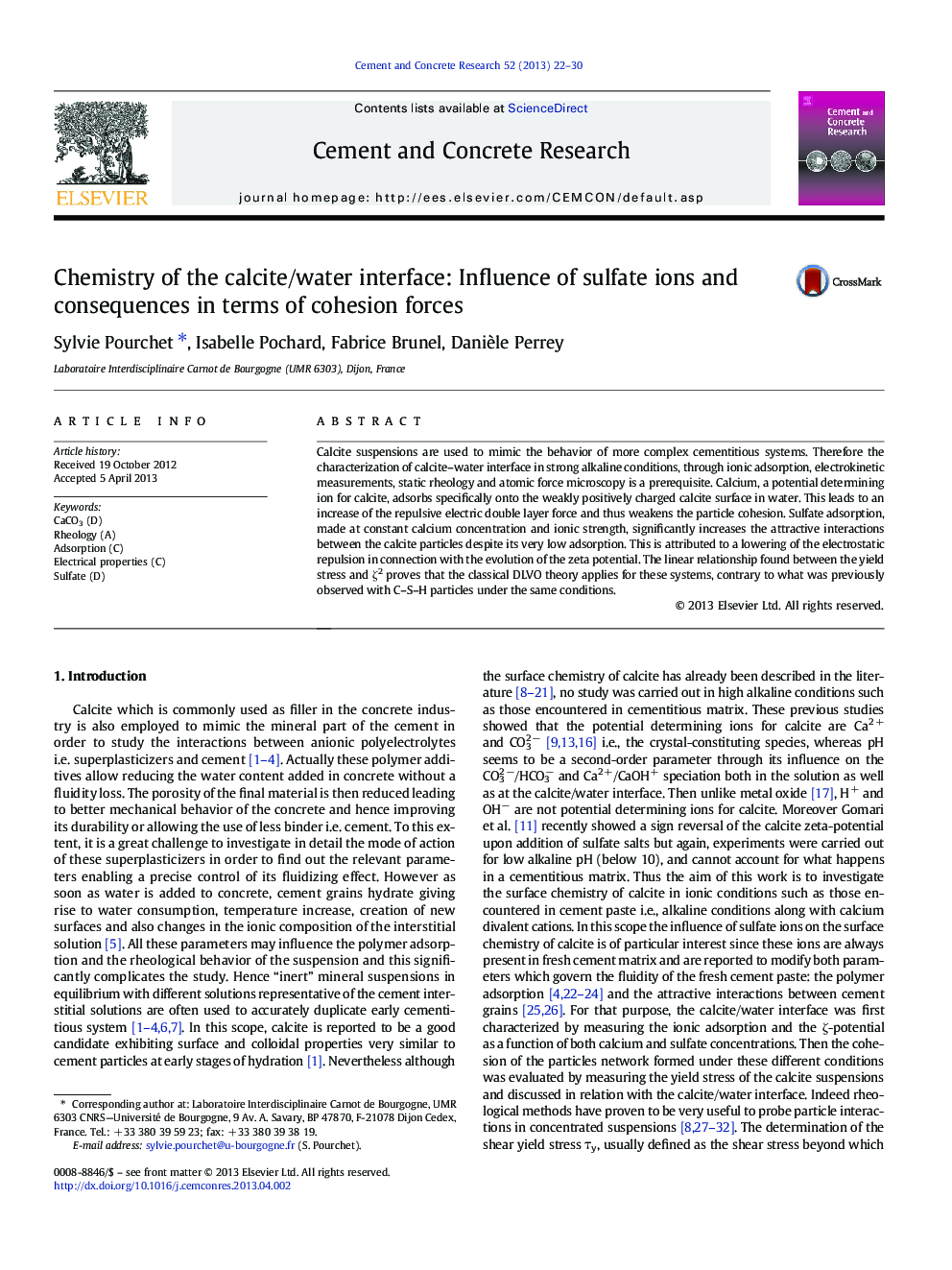| Article ID | Journal | Published Year | Pages | File Type |
|---|---|---|---|---|
| 1456369 | Cement and Concrete Research | 2013 | 9 Pages |
Calcite suspensions are used to mimic the behavior of more complex cementitious systems. Therefore the characterization of calcite–water interface in strong alkaline conditions, through ionic adsorption, electrokinetic measurements, static rheology and atomic force microscopy is a prerequisite. Calcium, a potential determining ion for calcite, adsorbs specifically onto the weakly positively charged calcite surface in water. This leads to an increase of the repulsive electric double layer force and thus weakens the particle cohesion. Sulfate adsorption, made at constant calcium concentration and ionic strength, significantly increases the attractive interactions between the calcite particles despite its very low adsorption. This is attributed to a lowering of the electrostatic repulsion in connection with the evolution of the zeta potential. The linear relationship found between the yield stress and ζ2 proves that the classical DLVO theory applies for these systems, contrary to what was previously observed with C–S–H particles under the same conditions.
